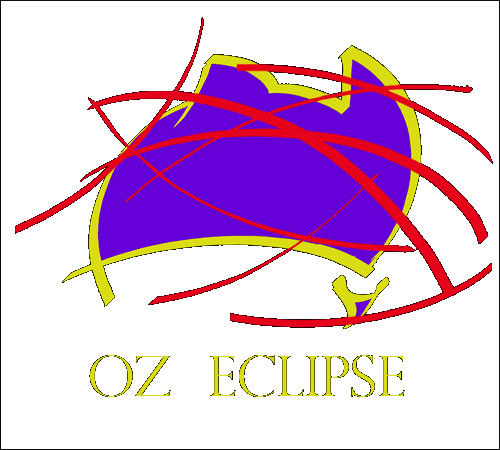
 |
WAITING FOR THE
SHADOW
SOLAR AND LUNAR ECLIPSE OBSERVING |
|
|
|
|
|
|
|
|
|
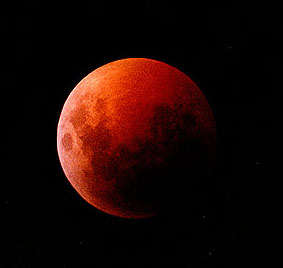 Total Lunar Eclipse July 16th,
2000
Total Lunar Eclipse July 16th,
2000
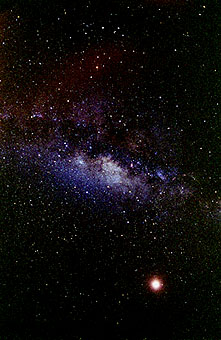 Eclipsed Moon and Winter Milky Way. 10 mins 18mm f3.5 PJ800. The red region above the milky way is an artefact of a little dew that formed on the lens diffusing the red light of the moon. |
This eclipse is distinguished by the fact that it was the longest eclipse of the 20th century. The geometry was almost perfect. The Moon was very close to perigee. The centre of the Moon traversed almost through the axis of the Earth's shadow cone. It all added up to making this a long deep eclipse with about 1hr 50m of totality. Given that its umbral depth was deeper than the June 1993 eclipse, I was hoping for another eclipse void of colour with a pallid almost invisible Moon. Mike Gill even gave some thought to flying over to see the eclipse from Australia. A week or two beforehand, he emailed to say that he was giving it up. A few days before the eclipse, some dodo ran into the back of my car at high speed while I was stopped at a red light. I decided to hire a car for the night so I could get right out of town to a really dark sky. A 70 minute drive saw me on a wide road verge on a quiet country road off the road between Binalong and Harden with very little light pollution. It was a crisp winter night. The temperature got down well below zero frost was forming on some of the metal parts and the car. The umbra crossed the lunar disc. Totality began. As totality progressed, it soon became clear that this eclipse wasn't going to be nearly as dark as the 1993 eclipse. At mid-eclipse the Moon took on a deep coppery red colour. I lay down on the ground and looked up. The eclipsed Moon was high in the sky on the outskirts of Sagittarius. The centre of the Milky Way galaxy was almost directly overhead. I could see the milky way galaxy running from Carina on the the south-west horizon to Lyra and Cygnus on the north-east horizon. This amazing view of the galaxy sent shivers up my spine, or was it the fact that I was lying on freezing cold ground. I got up and took a wide angle image of the full moon in the milky way[left]. |
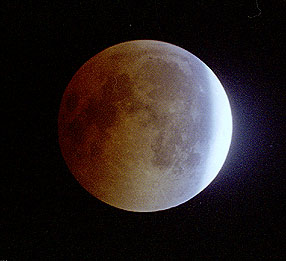
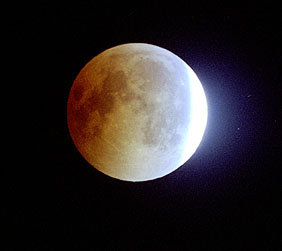
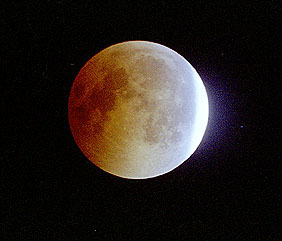


|
All the Moon images were taken at 0.5 s at the prime focus of my home made and figured 15cm f7 newtonian on KODAK PJ800 film. They were exposed 6 stops over the recommended exposure for the lit crescent. Provided you have optics that don't flare, overexposure shows the various colour bands. All pictures taken with the same optics. I made an error when scaling the images in Adobe Photoshop which is why they are different. Image processing |
![]()
![]() Home
Page........
Home
Page........